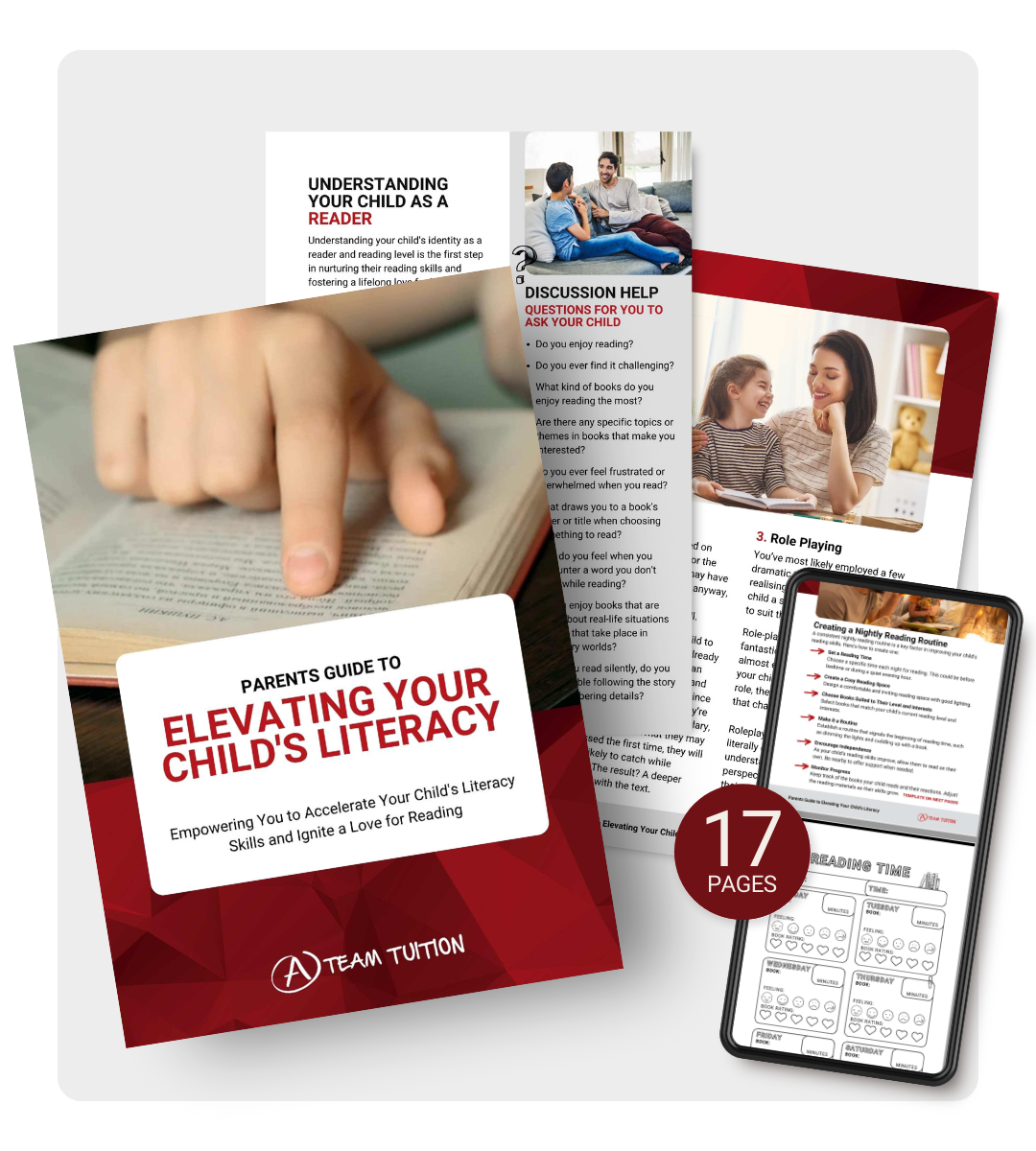Worried that your child is falling behind in their reading ability and comprehension?
How to Improve Your Child's Literacy
Our Free Parent's Guide will provide you with the tools and strategies you need to accelerate your child's literacy skills and ignite a love for reading!

Parent's Guide To Elevating Your Child's Literacy
IN THIS FREE GUIDE YOU WILL LEARN & RECEIVE:
How to identify your child's current reading level
Strategies and tools to elevate your child's reading skills
How to create an effective reading routine
Ways to ignite your child's passion for reading
Nightly reading log for your child
Reading level correlation chart
Elevate Your Child's Literacy
Help them now, before they fall too far behind!
Are you eager to boost your child's literacy skills and ignite their passion for reading? Our exclusive parent's guide provides you with three enriching chapters that empower you to become your child's ultimate literacy advocate!
1: Identifying Your Child's Reading Level
The first step to enhancing your child's literacy journey is understanding their current reading level. Inside our guide, you'll find engaging discussions, expert guidance, and a handy Reading Level Chart. Discover how to assess where your child stands and pave the way for improvement.
2: Strategies & Tools for Parents
Prepare to be equipped with a treasure trove of proven methods and practical strategies. With nine effective approaches at your fingertips, you'll have the tools needed to elevate your child's reading skills and empower them with the gift of literacy.
3: Cultivating Reading Skills through Routine
In this chapter, we present our comprehensive 'How to' Guide and a Nightly Reading Routine Sheet. These resources will help you create a nightly reading ritual that fosters a lifelong love for books and guarantees consistent progress in your child's literacy journey.
Join us in this transformative journey and become the parent who fuels your child's reading success. Ignite their passion for literature, boost their literacy skills, and watch them flourish into avid readers.
GET OUR FREE PARENT'S GUIDE TO IMPROVING READING

